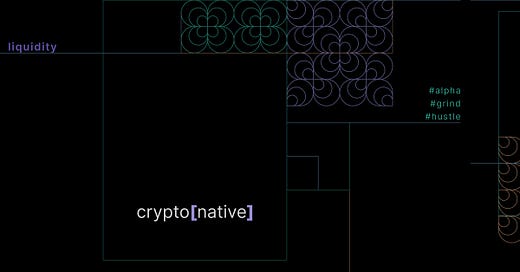Part 2: Why Liquid Startups Are Inevitable and Kind of Like Digital Legos for Adults
Zero-transaction costs, composability, and AI are turning startups into modular, self-iterating ecosystems that grow faster than a meme coin at midnight.
Explore all parts of the series: Part 1, Part 2, and Part 3. Additional articles will be linked as they are published. Stay updated in real-time by following Tom Serres on X.com or LinkedIn.
Looking to navigate and invest in the age of Web3? Visit Nautilus.Finance for expert guidance and support in this rapidly evolving ecosystem.
The Why Behind Liquid Startups
Zero-transaction costs are not just a theoretical concept. They are the foundation of liquid startups and the driving force behind their disruptive potential. As explored in Part 1, the inefficiencies that once defined startups such as long fundraising cycles, labor-intensive product development, and rigid governance structures, are being dismantled by blockchain, AI, and tokenization. These forces explain why liquid startups are inevitable. But when paired with the power of composability, they become revolutionary.
Composability is the ability to seamlessly integrate existing tools, protocols, and components like digital Lego blocks. In traditional startups, innovation cycles were slow and often bogged down by infrastructure challenges, endless partnerships, and months of negotiation. Liquid startups skip this inefficiency entirely. They leverage the modular nature of Web3 to build faster and smarter by snapping together ready-made components for everything from payments to governance.
Combine this with the golden age of AI, where intelligent systems are accelerating innovation at unprecedented speeds, and you have a recipe for rapid, compounding progress. AI is shrinking innovation cycles further, optimizing decision-making and iterating on products in real time. It is not hard to imagine a future where AI achieves its own zero-transaction cost moment, creating self-sustaining innovation that revolutionizes how startups are built.
Composability as a Shortcut to Innovation
In the liquid startup model, composability is a core strength. Instead of spending months building custom systems from scratch, founders can pull from a vast ecosystem of pre-built protocols and frameworks. Need a payment layer? Plug in a DeFi protocol. Want to implement tokenized governance? Use an existing DAO framework. Composability eliminates redundancy, letting startups focus on delivering value instead of reinventing the wheel.
This approach accelerates innovation cycles. Startups can test, launch, and scale faster because the building blocks are already there. Composability turns startups into dynamic ecosystems, allowing founders to experiment, pivot, and adapt at a pace traditional companies could never match. And as the Web3 ecosystem grows, the pool of composable tools expands, creating a self-reinforcing loop of faster and better innovation.
Keep reading with a 7-day free trial
Subscribe to crypto[native] to keep reading this post and get 7 days of free access to the full post archives.
![crypto[native]](https://substackcdn.com/image/fetch/$s_!baju!,w_80,h_80,c_fill,f_auto,q_auto:good,fl_progressive:steep,g_auto/https%3A%2F%2Fsubstack-post-media.s3.amazonaws.com%2Fpublic%2Fimages%2Fc94827b0-d403-4ff4-a1dc-b507623bbbd2_1000x1000.png)

![crypto[native]](https://substackcdn.com/image/fetch/$s_!baju!,w_36,h_36,c_fill,f_auto,q_auto:good,fl_progressive:steep,g_auto/https%3A%2F%2Fsubstack-post-media.s3.amazonaws.com%2Fpublic%2Fimages%2Fc94827b0-d403-4ff4-a1dc-b507623bbbd2_1000x1000.png)

